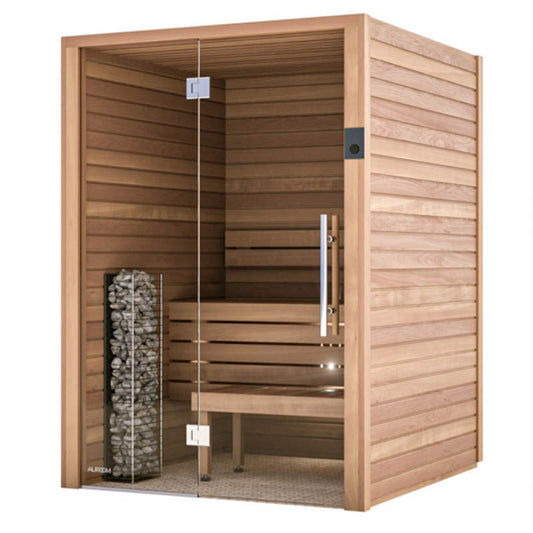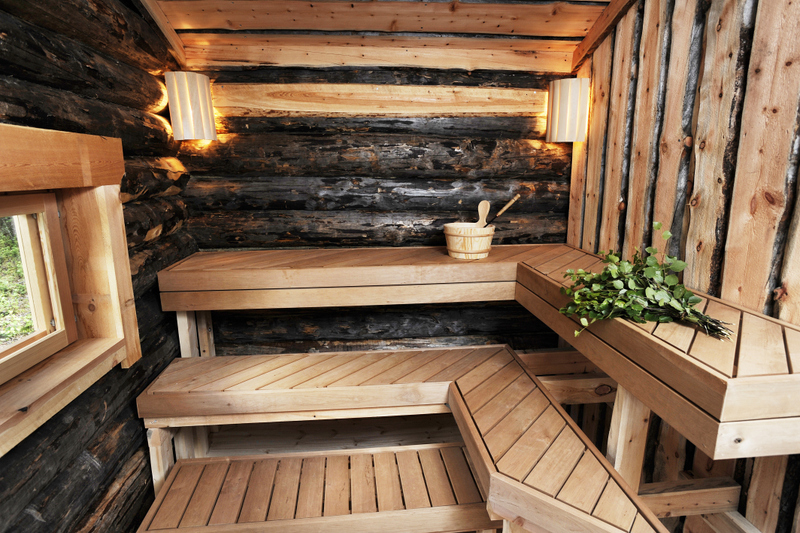The Best Guide To Traditional Sauna
Table of ContentsAn Unbiased View of Traditional SaunaThe 10-Second Trick For Traditional Sauna4 Easy Facts About Traditional Sauna DescribedNot known Incorrect Statements About Traditional Sauna Some Known Questions About Traditional Sauna.
Many of the weight lost in a sauna is water loss and is re-gained upon rehydrating. Nonetheless, undoubtedly sauna can be a vital part of a healthy and balanced weight-loss program. To check out the distinctions in between conventional and IR saunas, I will certainly divide these into proven, theoretical, and fabricated differences.Hence, the best point in the saunawhich is at the ceiling straight over the sauna heateris commonly between 185 and 190 F. Claims that a standard sauna goes beyond 200 F is simply not real and not suitable for electric saunas sold in the United States. The temperature for a far-infrared sauna is usually set in between 120 and 140 F; nonetheless, unlike the standard sauna, the goal in and IR room is not to accomplish a heat.
As a result of this, the temperature level distinction is almost pointless, because excessive sweating results in both sauna types, however the method of heating up the body is different. In an IR sauna the bather will feel hot and will certainly sweat a lot, however at much reduced temperatures (Traditional Sauna). Hence, if the goal is to spend longer amount of times in the sauna, the IR sauna is a great option
When a standard sauna has actually been appropriately warmed, the sauna walls are warm, the air temperature level has achieved set temperature and the rocks are super heated. As an intriguing side note, the heated walls and the rocks are giving off far-infrared warmth, combined with the heated air, to develop an "enveloping warm".
The Best Guide To Traditional Sauna

When the high temperature is achieved, the components cycle on and off to preserve the high temperature level. Many traditional sauna customers delight in putting water over the rocks to produce steam to raise sauna humidity levels. The advantages of putting water over the rocks consist of: making the space more comfy, dampening the nasal passages, and allowing the usage of aromatherapy by blending vital oils with the water.

When the power enters the body, it triggers the body temperature level to raise and eventually causes perspiration. In an infrared sauna it is very important for the emitters/heaters to stay on almost continuously. Since there is no mass of rocks to keep heat, the sauna will certainly cool down if the emitters turned off.
As discussed above, the sauna bather in an infrared space intends to place himself in front of running emitters to obtain optimal gain from the heat. The heating time for both rooms can be extremely various, depending on just how the rooms are utilized. For a standard sauna, a bather needs to allow 30-40 minutes for the area to achieve a preferred temperature level and to properly pre-heat the rocks.
The Traditional Sauna Diaries
A well built sauna will commonly accomplish a temperature of 150-160 F in regarding 30-40 minutes. For hotter temperatures, the room might require to heat for a longer duration.

Traditional saunas have a tendency to be larger (hence utilize more electricity) than infrared saunas, although standard saunas are definitely available in one and 2 individual sizes. For a two-person traditional sauna, 5x6 or 5x7 size is most prominent. The top bench can easily seat two or 3 individuals and is likewise long sufficient to lie down throughout the sauna session.
Traditional Sauna Can Be Fun For Everyone
The ordinary expense per kWH of power in the U.S. is approximately $0.11, so a 4.5 kW heater will cost roughly $.50 to run for one hour, if the heating system runs continuously for one hour. Usually a sauna heater will compete 75% of the first hour and 50% of succeeding hours on considering that the components cycle once the set temperature is achieved.

There is a hardly ever gone over difference in the social experience between the two areas. While our society has lost some of the social benefit of the typical sauna experience, it can be extremely socially gratifying (Traditional Sauna). From household time in the sauna, to heart-felt conversations with better halves, to sauna partiesthe traditional sauna experience can bring about intimate mingling
Getting My Traditional Sauna To Work
The majority of higher end infrared rooms include tinted light treatment, audio systems and full-glass fronts.